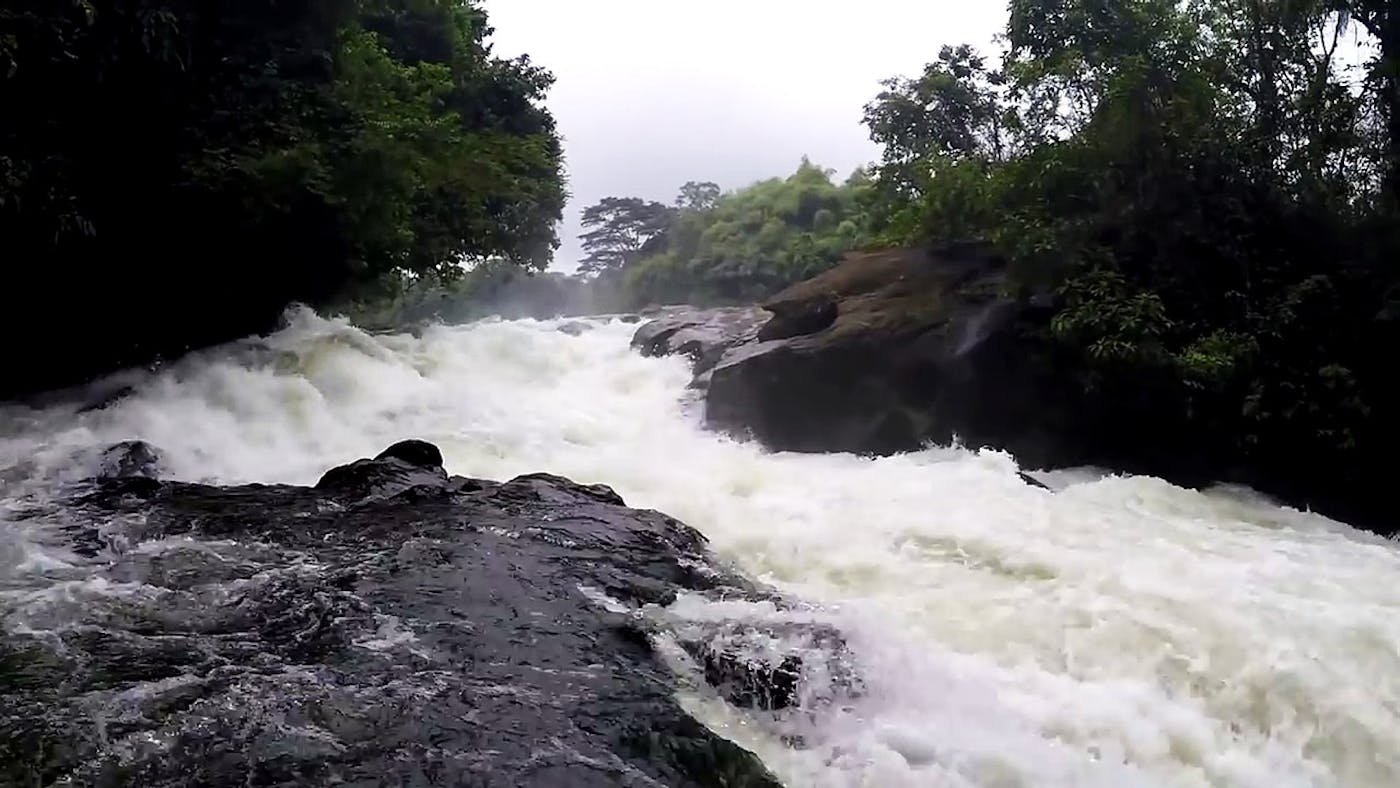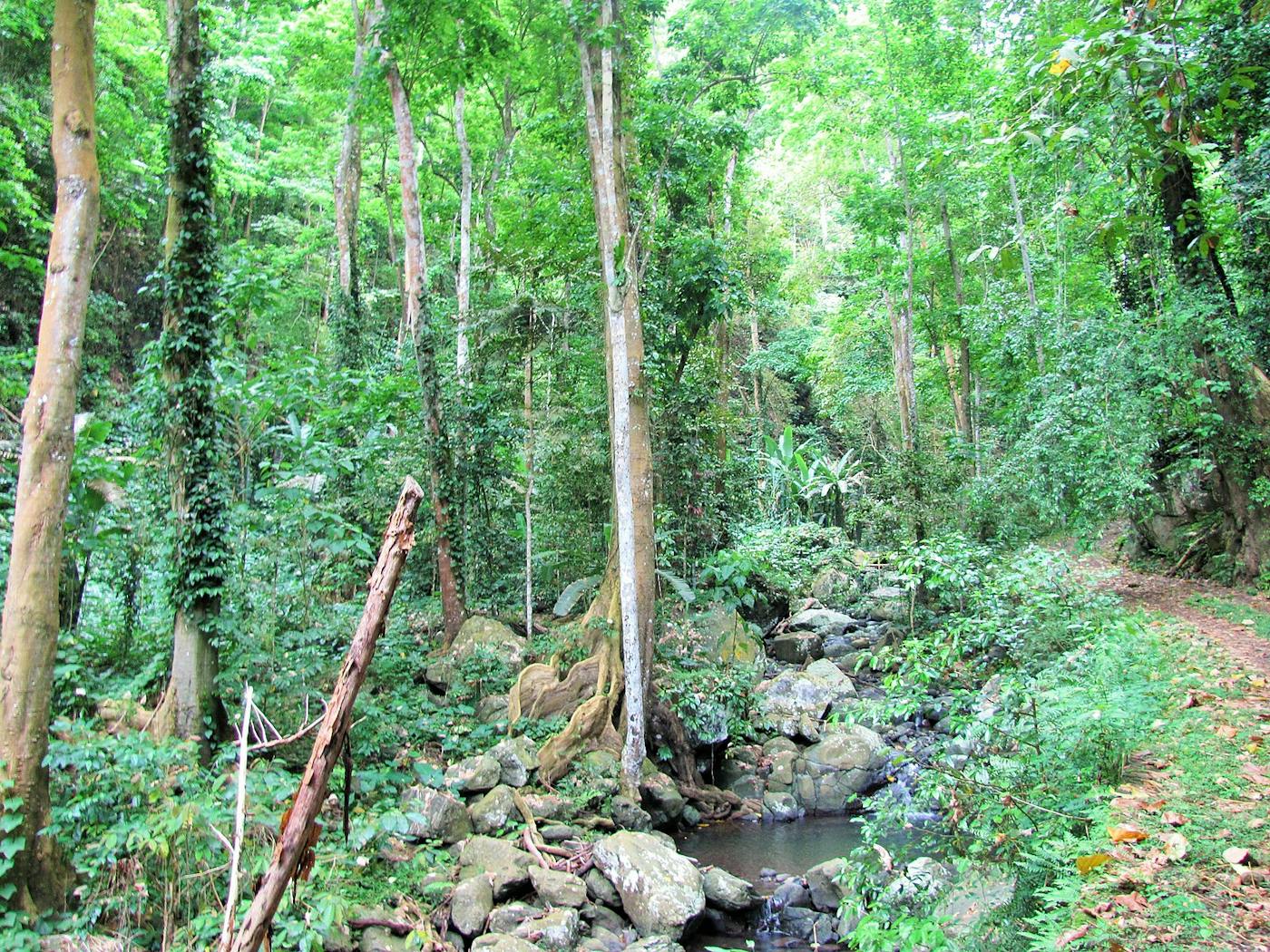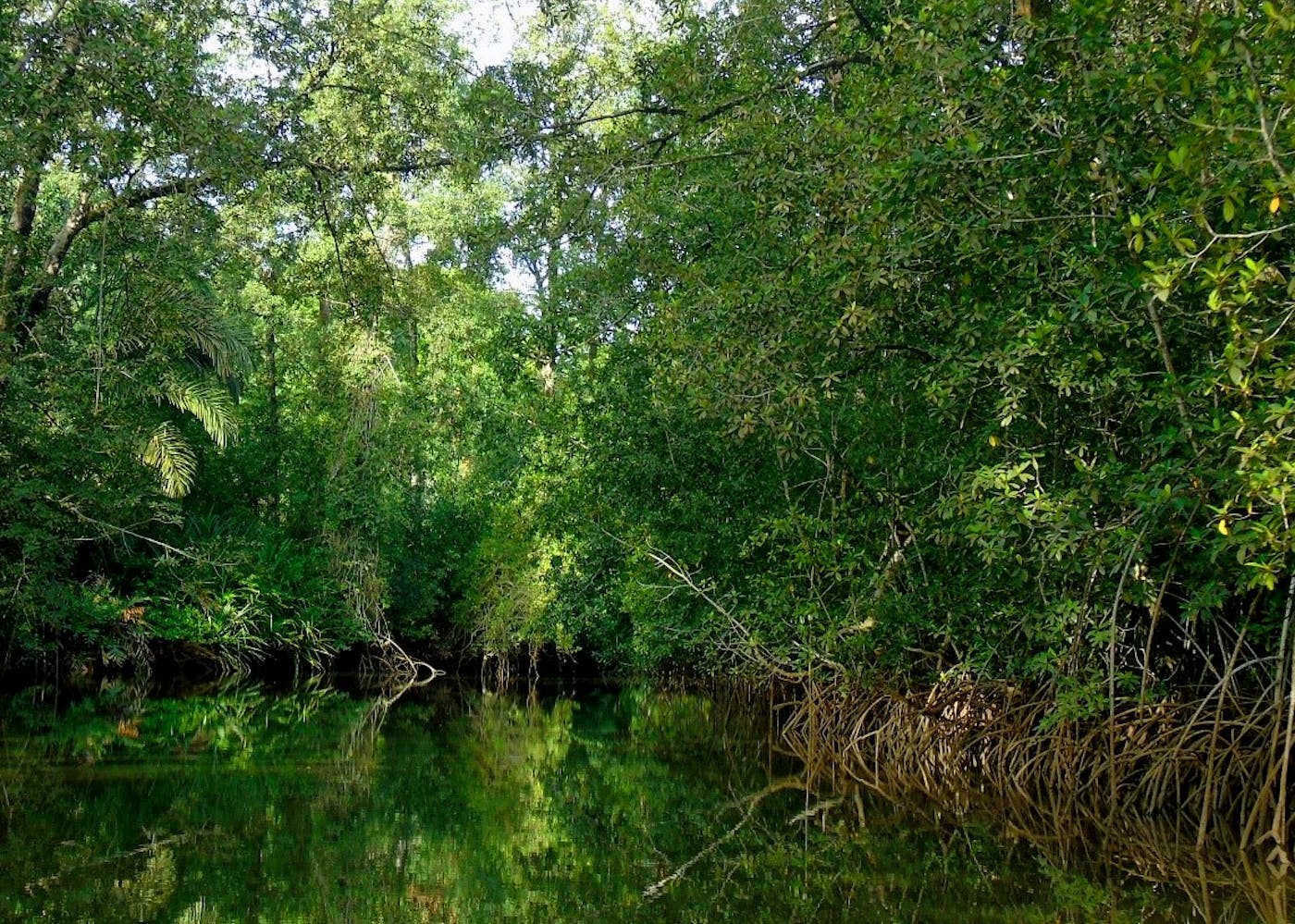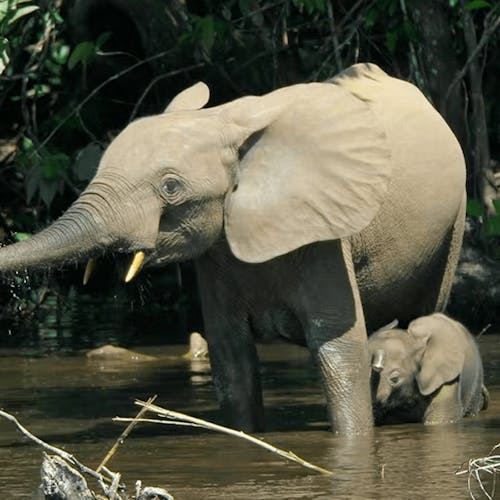Gulf of Guinea Coastal Forests & Mangroves Bioregion
The bioregion’s land area is provided in units of 1,000 hectares. The conservation target is the combined Global Safety Net (GSN1) areas for the component ecoregions. The protection level indicates the percentage of the GSN goal that is currently protected on a scale of 0-10. N/A means data is not available at this time.
The Gulf of Guinea bioregion, located in the Equatorial Afrotropics subrealm, consists of lush tropical forests and mangroves lining the coastline of Gabon, Equatorial Guinea, Cameroon, and Nigeria, and includes Bioko, São Tomé, Príncipe, and Annobón islands. With seven terrestrial ecoregions—Congolian Coastal Forests (5), Cross-Niger Transition Forests (6), Cross-Sanaga-Bioko Coastal Forests (7) Mount Cameroon and Bioko Montane Forests (21), Niger Delta Swamp Forests (22), Nigerian Lowland Forests (23), São Tomé, Príncipe, and Annobón Forests (27)—as well as the Central African Mangroves (111) and adjacent marine areas. These Coastal Forests have been an ancient cradle for Congo’s globally important populations of large forest mammals, including western lowland gorilla, chimpanzee, African forest elephant, and several endemic monkey species.
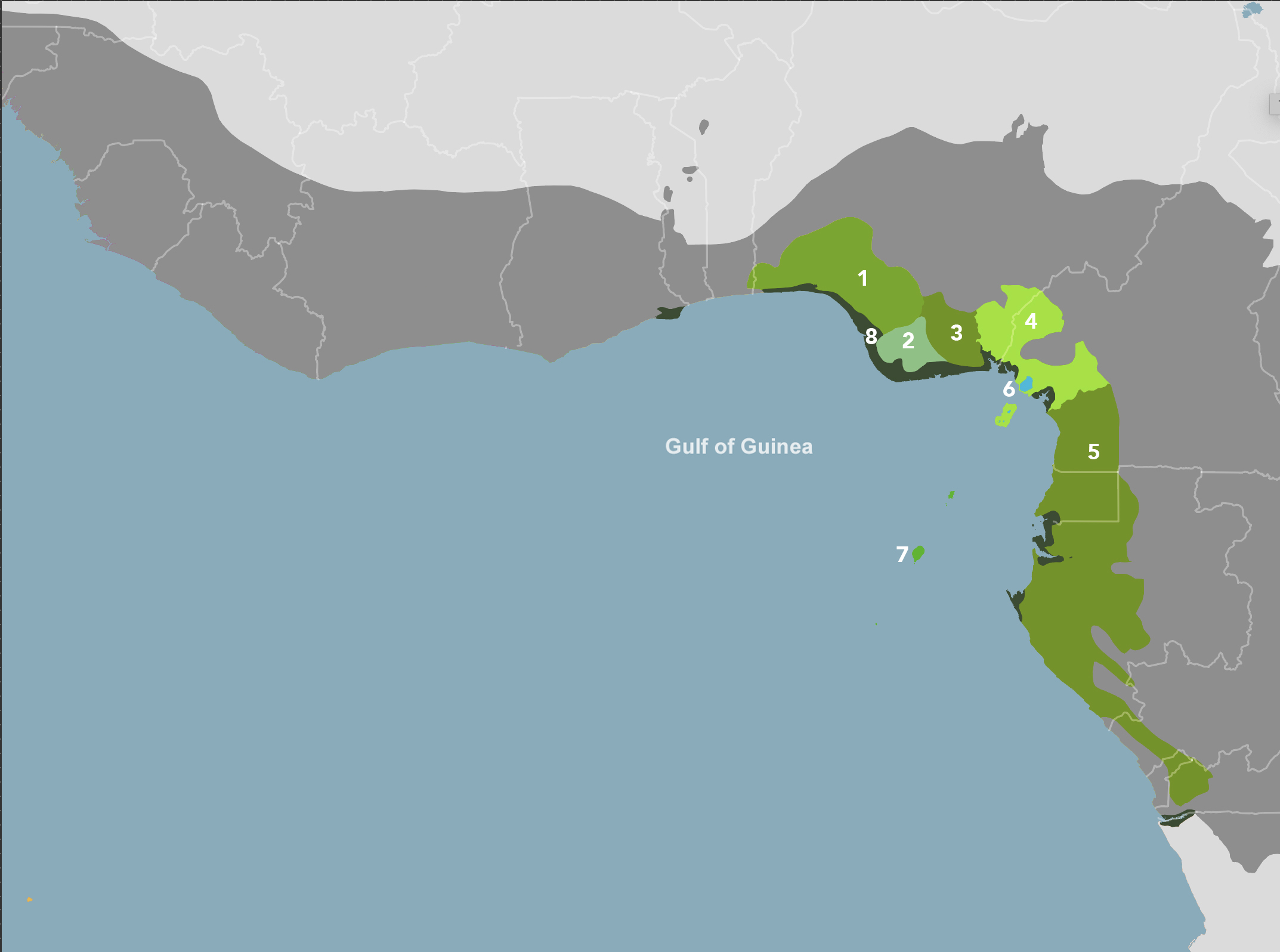
The Gulf of Guinea Coastal Forests & Mangroves bioregion is part of the Equatorial Afrotropics subrealm and is made up of eight ecoregions: Nigerian Lowland Forests [1], Niger Delta Swamp Forests [2], Cross-Niger Transition Forests [3], Cross-Sanaga-Bioko Coastal Forests [4], Congolian Coastal Forests [5], Mount Cameroon and Bioko Montane Forests [6], São Tomé, Príncipe, and Annobón Forests [7], Central African Mangroves [8].
Learn more about each of the eight ecoregions located in the Gulf of Guinea Coastal Forests & Mangroves Bioregion below.
Explore the Bioregions
Want to learn more about the fascinating species, diverse ecosystems, and natural wonders of the Earth? Click the button below to launch One Earth's interactive navigator and discover your Bioregion!
LAUNCH NAVIGATOR